Nothing perks up a home during the dreary months of winter like a lush array of houseplants. From an overflowing string of hearts to a glossy elephant ear to an imposing cactus, your houseplants keep the air clean and fresh, regulate temperature and humidity (or lack thereof), and help combat seasonal effectiveness disorder by giving your serotonin a boost.
That said, the winter months can present serious confusion for even seasoned plant lovers. Do you keep the same watering schedule or change it, and if so, how? What about getting them enough light and warmth when the days get short and cold? Do you have to rearrange your entire plant array, or can they stay in the same places they usually live? And what about this bipolar behavior of bursting into beautiful bloom, only to drop all its leaves the next day?
Relax, breathe — your plant babies are going to be fine. The fact is that nearly all the changes that happen to houseplants during the winter are completely normal. Once you learn to read the signals your plant is sending during the winter, you’ll be set up to ensure that your beautiful green friends keep thriving from September to May.
General Tips for Winter Houseplant Care
The first rule of winter care for houseplants is making sure your plants are super healthy before cold weather sets in. That means that fall is the perfect time to set your houseplant menagerie up for success. Plants go into a dormant period in winter that makes them very vulnerable, so give them one last boost of fertilizer (more on that later), mist them generously a few times per week, maybe even play them some Mozart.
It’s totally normal for your houseplants to drop leaves during winter. It’s how they conserve energy; less resources have to go into keeping all those leaves healthy. If your houseplant is shedding but the leaves that are left look healthy, don’t overwater to compensate. Just let it happen.
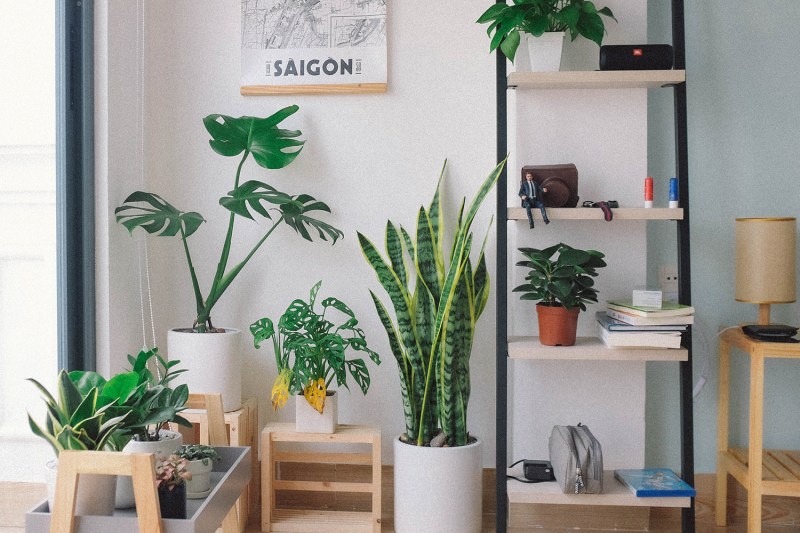
Speaking of overwatering, it’s the number one culprit for winter houseplant death. The signs of overwatering include yellow leaves, moldy soil, and weird little bugs flying around the pot. If you see this happen, stop watering for at least a few weeks, maybe longer. Let the soil dry out until just before it starts pulling away from the pot, then resume infrequent waterings.
Don’t let dust accumulate on your plant leaves, especially tropical plants with large leaves (such as monstera or elephant ears). Your plants need all the light they can get during the winter, and dust inhibits the plant’s ability to photosynthesize — it essentially clogs their pores, preventing them from “breathing.” Gently remove dust with a wet towel, or else stick all the plants in the bathtub and turn on the shower to give them a good rinse. (Make sure they dry out well afterward, though.)
That thing we just said about needing light? Don’t take it to an extreme. A lot of people think that moving a plant closer to a window will help them during shorter days. But in fact, too much direct sunlight and heat can actually hurt your plants during the vulnerable months. Keep your plants in indirect light, and ensure the temperature stays at a moderate 57 to 65 degrees Fahrenheit. If you live farther north, you can also consider replacing the incandescent bulbs in nearby lamps with a full spectrum light to give your plant a vitamin D boost.
Many plants, especially tropical ones, are sensitive to cold air. A draft cane make them drop leaves like crazy. If your plant normally lives right next to a window, make sure the window is well sealed, or else move it back a little. Definitely move your doorway plants to an area where they’ll be protected from cold air rushing in and out.
Let your plant enjoy its dormancy. Don’t try to repot or fertilize until spring comes around. When you do fertilize again, take it easy: dilute the fertilizer to 1/4 strength the first time you use it.
Winter Care Tips for the Most Common Houseplants
Now that we’ve covered some general rules, here are some specific tips on how to care for the most popular houseplants during the fall and winter months.
Pothos
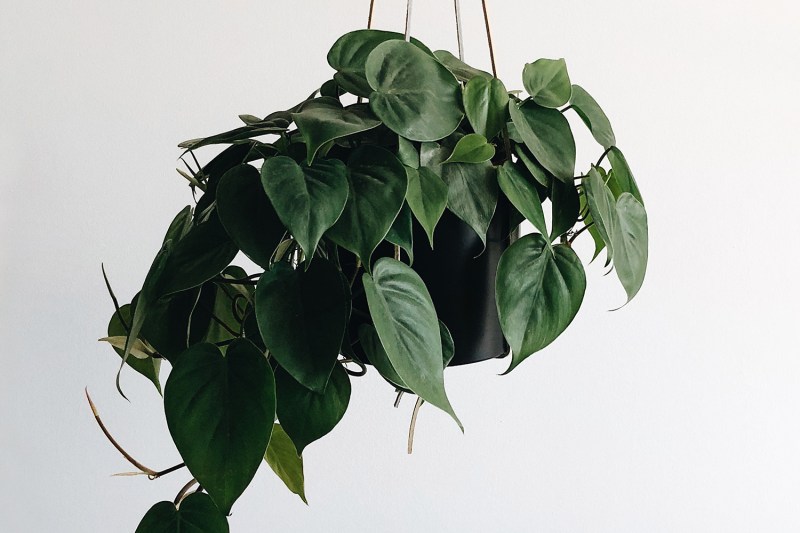
This plant has a shallow root system, which means less is more when it comes to watering. In the winter, watering should be extra light — don’t soak the soil, but instead water lightly around the pot, and do it only about every two weeks, when the soil has been dry for a while. Move to a warmer spot in the house, ideally near a window (as long as it’s not too drafty), and don’t fertilize until spring.
Spider Plant
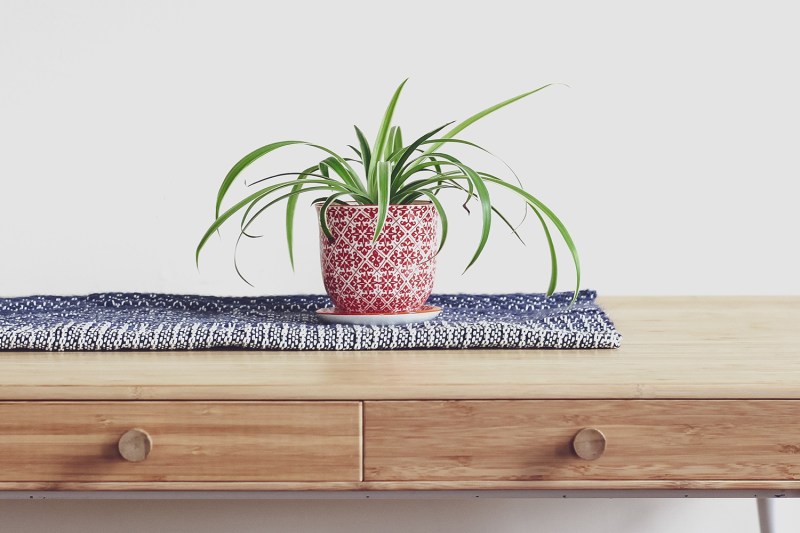
Spider plants hate cold, so move them away from windows when winter arrives. Avoid fertilizer, and don’t trim during the winter — spider plants need all their chlorophyll to survive during cold months. Regularly rotate the pot so one side doesn’t get all the sun. Keep in a warm place, but avoid having the plant directly on or in front of a heater. Switch from watering to misting, and only when the sun isn’t directly on the plant (otherwise the leaves will burn).
Succulents and Cacti
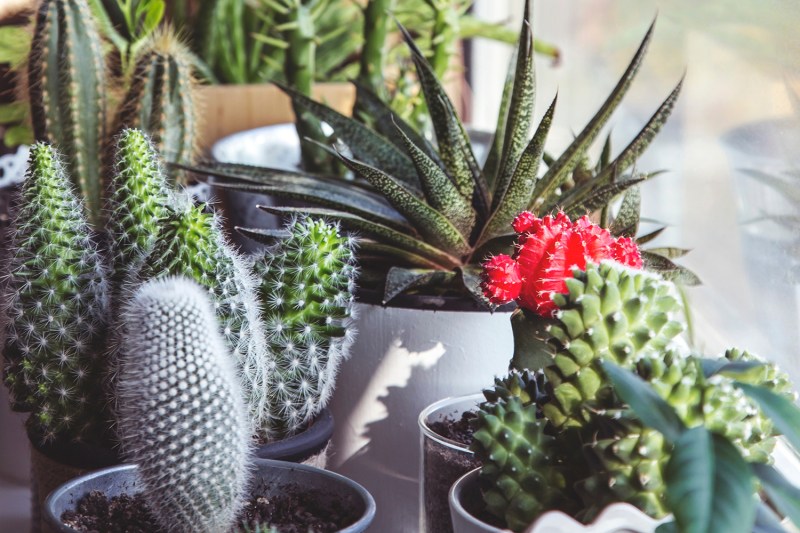
Succulents are very cold tolerant and need less light during the winter. That said, if they start getting leggy (more space between the leaves), move them to a brighter spot in the house. For best results, make sure your plant receives at least three to four hours of bright, indirect light a day, ideally near a south or east facing window, and water only when they’re completely dry (once every 2 to 4 weeks). Make sure to keep the plant itself dry when you’re watering, to avoid rot. Also, expect your hanging succulents (like string of pearls or burro’s tail) to stop growing during the winter months.
Ficus
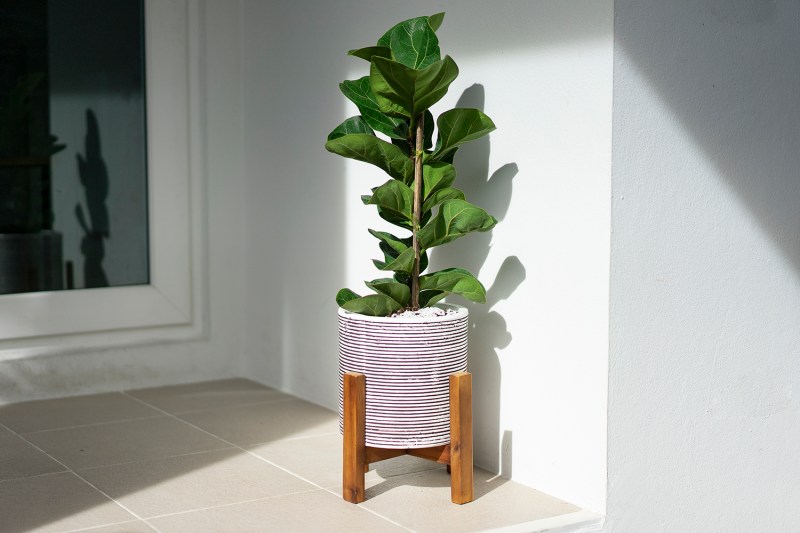
It’s normal for ficus to drop leaves during winter, so don’t freak out if your tree is shedding a lot. Keep it away from drafts, both cold and hot, and rotate it a quarter turn each week to get an even amount of sunlight. Water biweekly at most, but keep the plant humid with a humidifier nearby or by misting it 2 to 3 times per week.
Sansevieria
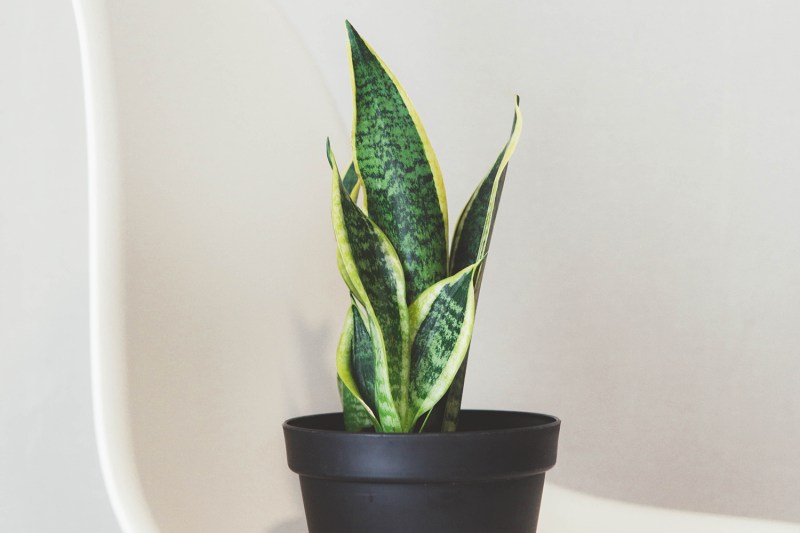
Also known as devil’s tongue, mother-in-law tongue, or snake plant, Sansevieria tolerates the dry air of winter months quite well. Water just enough to prevent the soil from drying out completely, but make sure to avoid getting water in the center or on the leaves to avoid rot. Keep it in a bright sunny spot, mist the leaves one to two times per week, and don’t fertilize.
Monstera
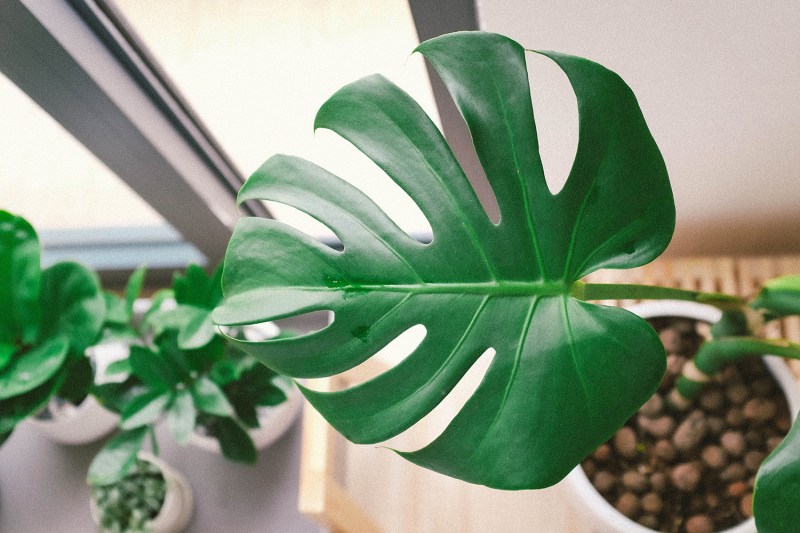
The darling of the social media age, monstera (or Swiss cheese plant) is very sensitive to overwatering, especially in winter. Make sure the soil is thoroughly dry at least 2 inches down before watering again. Mist the leaves as often as you can, ideally every day, using soft water (since tap water has an overabundance of salt that can hurt your tropical plant). If you see brown, crispy edges on the leaves, the plant is too close to a heat source — move it to a spot where hot, dry air won’t be hitting it.
Philodendron
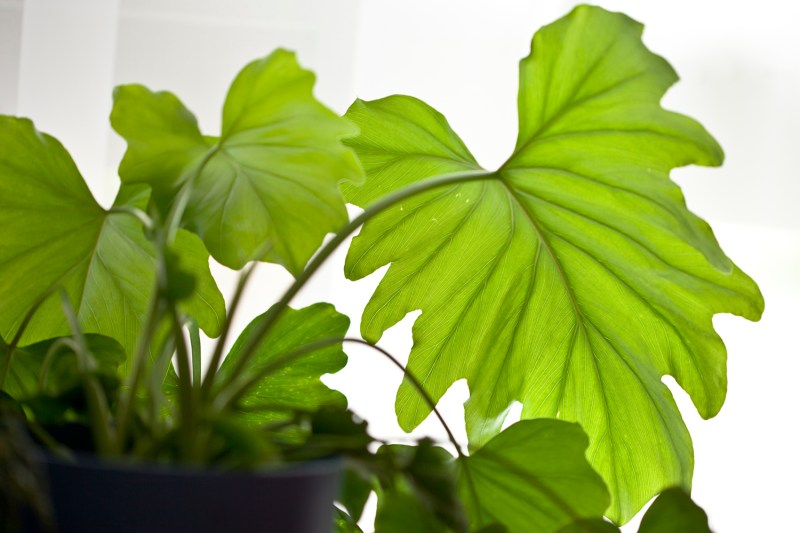
This is the exception to the “don’t fertilize in winter” rule. Every 6 to 8 weeks, give your philodendron a taste of a balanced liquid fertilizer, especially if you notice the leaves getting pale. You can also repot in late winter, just before spring; you want to transplant the philodendron before it begins active new growth. Water only when the soil is dry 1 to 2 inches down, and mist the leaves occasionally in between watering.
Elephant Ear
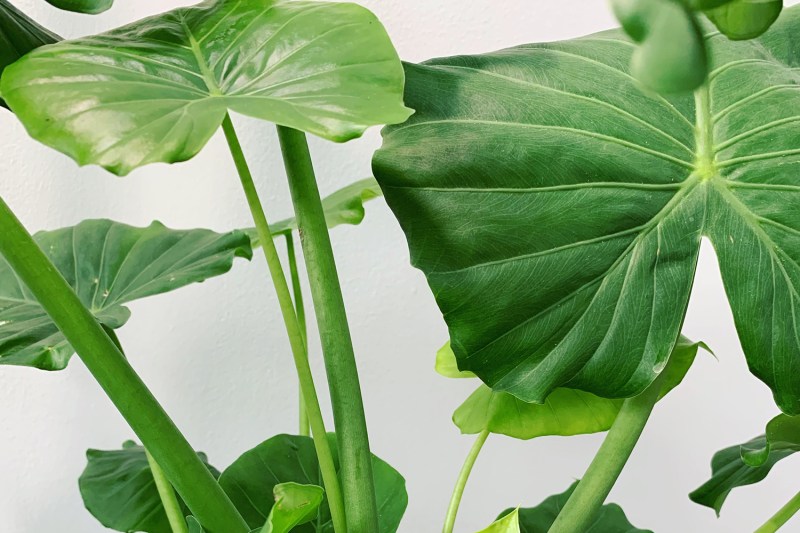
These finicky plants require warm temperatures between 65 and 75 degrees, bright and indirect light, high humidity, and consistently moist (but not wet) soil. Get it a humidifier for the holidays and elevate the pot slightly on a layer of pebbles to prevent root rot. If, despite your best efforts, your elephant ear plant begins to turn brown and drop lots of leaves, it’s okay — it’s just going dormant. At that point, cut off all the foliage and stop watering until you see new shoots appear in spring.
Hoya
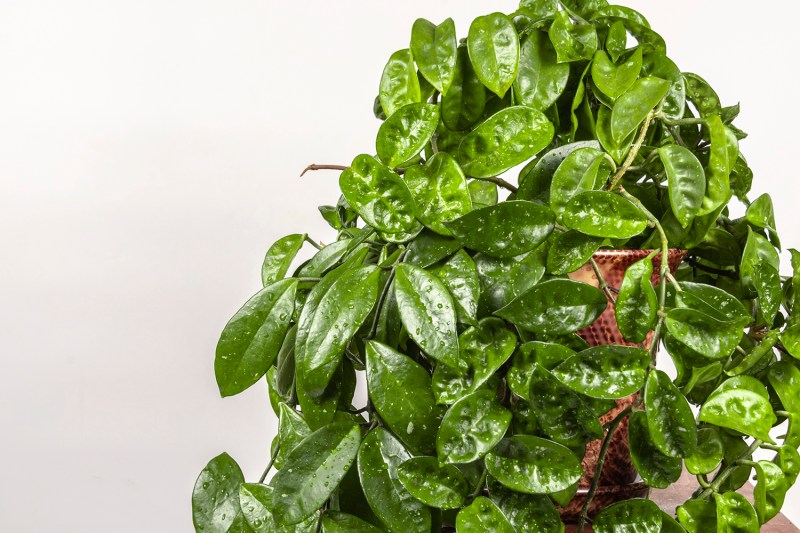
This wonderfully forgiving vine needs barely any water during the winter. In fact, you can leave off watering altogether until you see the leaves starting to crinkle, then give it a gentle soaking and leave it alone again. Just give it some good indirect sunlight and make sure to keep it warm.
Euphorbia
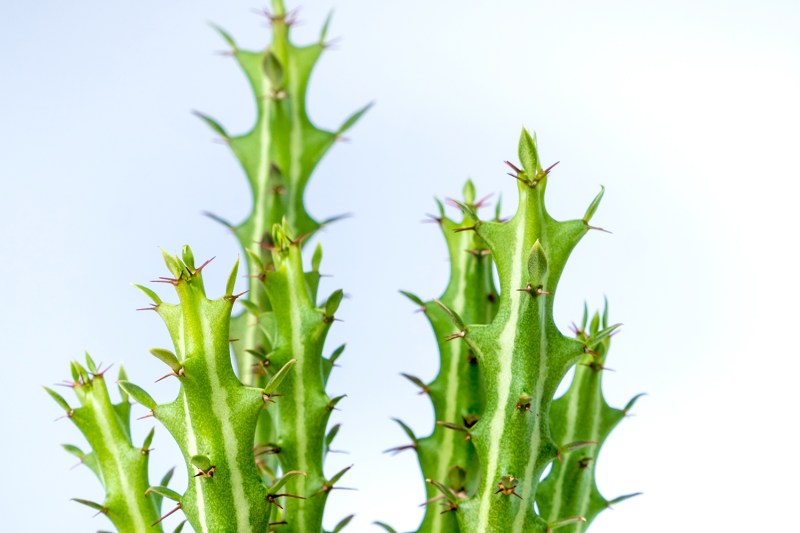
The little beauties in this large genus of plants need more water than most plants during the winter. It’s best to keep up the same watering schedule as the rest of the year, just give it a little less than usual, and don’t add water unless the soil is dry. Even with your best efforts, though, be aware that the euphorbia tends to go fully dormant in winter, dropping all its leaves and even shriveling. Don’t panic — it’ll be back in the spring.


